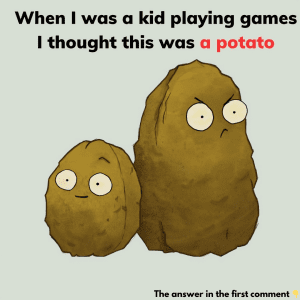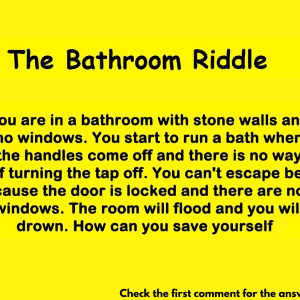Puzzles are a fun and engaging way to sharpen your problem-solving skills while giving your brain a much-needed workout. The puzzle we’re tackling today involves shapes and numbers, where your task is to uncover the hidden rule that links the shapes to their respective numbers. If you’ve already been staring at the shapes and numbers, trying to decipher the pattern, don’t worry—you’re not alone! Let’s break it down step by step to find the solution.

When solving pattern-based puzzles, it’s easy to focus on the wrong details. Many people are drawn to the visual design of the shapes, assuming that the answer lies in their color or size. However, these puzzles often hide their secrets in the finer details, like the number of components, the arrangement of elements, or the contrast between filled and empty spaces.
Another common mistake is jumping to conclusions too quickly. Puzzle solvers often want to rush to an answer, especially when the problem seems simple at first glance. But puzzles like these require patience. You need to carefully analyze every aspect before making a decision.
To solve this puzzle, we need to figure out how the shapes are connected to the numbers. Let’s examine the clues we’re given:
- The first shape equals 18.
- The second shape equals 20.
- The third shape’s number is missing, and that’s the one we need to solve.
At first, you might wonder whether the color of the shapes or their overall design plays a role in determining the number. However, if you look closely, you’ll notice that each shape is made up of squares—some are white, and some are filled in with a solid color. The key to solving the puzzle lies in the relationship between the white squares and the non-white (colored) squares.
The trick to solving this puzzle is surprisingly simple once you know what to look for. The numbers are generated by multiplying the number of white squares by the number of non-white squares within each shape
Let’s Analyze Each Shape
Shape 1:
- Number of White Squares: 6
- Number of Non-White Squares: 3
- Calculation: 6 × 3 = 18
- Conclusion: The number for this shape is 18, which matches the given number.
Shape 2:
- Number of White Squares: 5
- Number of Non-White Squares: 4
- Calculation: 5 × 4 = 20
- Conclusion: The number for this shape is 20, confirming the pattern.
Shape 3 (The One We Need to Solve):
- Number of White Squares: 7
- Number of Non-White Squares: 2
- Calculation: 7 × 2 = 14
- Conclusion: The missing number for this shape is 14.
By applying the same rule to Shape 3, we multiply the number of white squares (7) by the number of non-white squares (2), giving us the final answer: 14.
As you can see, solving this puzzle wasn’t about focusing on colors or visual design—it was about carefully analyzing the details of each shape. Pattern puzzles like this teach us that patience and attention to detail are crucial. If you rush through or focus on the wrong elements, you’re likely to miss the simple rule that leads to the solution.
Puzzles aren’t just entertaining—they’re also fantastic for your brain health. Solving puzzles improves your cognitive abilities, sharpens your memory, and enhances your problem-solving skills. By challenging your brain with puzzles regularly, you train it to think more critically, notice patterns faster, and become more effective at breaking down complex problems.
So, did you figure out the solution to this puzzle on your own? If you did, congratulations! You’ve just successfully cracked a pattern puzzle by focusing on the right details. If you didn’t, don’t worry—puzzles like these are meant to challenge your brain and push you to think in new ways.
Remember, solving puzzles is all about patience, attention to detail, and practice. The more puzzles you tackle, the better you’ll get at noticing the small details that lead to the correct answer. So, challenge yourself with more brainteasers, pattern puzzles, and logic games—you might just surprise yourself with how quickly you improve!


